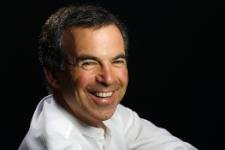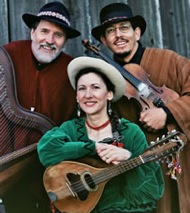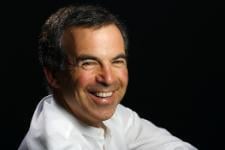Thursday night’s concert at the Mission Cultural Center for Latino Arts had all the markings of Bay Area fusion — a combination that works through pure juxtaposition, rather than synergy. The quartet of musicians from the San Francisco Chamber Orchestra was the wasabi mustard on the folk music group Trio Chaskinakuy’s burgers and potatoes. Benjamin Simon, SFCO’s music director, attempted a connection by emphasizing the folksy, gypsylike second movement of Haydn’s String Quartet in C Major, Op. 54, No. 2, in his introduction to the piece. Praising it as full of charm, wit, and humor (and not boring), he raised his bow and the quartet — violinists Robin Sharp and Hrabba Atladottir, Simon on viola, and cellist Gianna Abondolo — played the piece.

Simon’s acknowledgment of unfair preconceptions about classical music that are abroad in our culture struck me as uncharacteristically defensive. But live performance is always the best answer — the corporeal, unfailingly physical experience of live music; the players’ bodies constantly moving in time to the rhythm. No two patterns of movements were the same. Inevitable arch looks the players gave each other signaled meaning in the music. Changing the lighting of the stage to ensure the adagio was felt as such. No music performed so passionately and with spectacle escapes understanding. More so than the hint of gypsy influences, communicating the music live to an audience made it relevant.
In keeping with the folk-music theme of the evening, Simon segued into Bartók’s Six Duos, . Bartók, a classical composer who also did folk, was one of the first ethnomusicologists, and traveled the countryside with a wax-cylinder phonograph to record singers and their song repertories. Fortunately, the SFCO performance had sufficient folk syncopation, mournful crying, and playful pizzicato to bear out Simon’s remarks and erase any undertone of self-consciousness.
The linchpin of the show, and also the guest of honor, was Latin Grammy–winning composer Gabriela Lena Frank, whose family background and interests in community outreach clearly had motivated this event. SFCO’s composer in residence, she writes music that’s marked in various ways by her investigations into Andean and Peruvian music. She described the final movement of Inkarrí, a string quartet she wrote for the Kronos Quartet, as a fantasy wish for the return of the Inca king murdered by the conquistador Francisco Pizarro —“kind of like Jesus returning.”
She was not exaggerating. Sharp’s violin carried the melody’s contained defiance and spiritual longing, while her counterparts strummed their instruments in violent, downward swipes with fingers extended. Bay Area native Henry Cowell would have been proud that one of his techniques has found a loving relationship with the past. A man sitting in the back of the auditorium who had sucked his teeth during the Haydn quartet leaned forward with elbows on knees and head in hands for this piece.

The second half of the program featured a folksiness that needed no introduction. Trio Chaskinakuy, consisting of Edmond Badoux, Francy Vidal, and Daniel Zamalloa, took the audience on a tour through the indigenous music of the eastern slopes of the Andes and the Amazon River — to the shores of Lake Titicaca; to a wedding party in Ecuador; to Argentina ,where a young boy asks a bird if he is an orphan, too; and to Marca, the carnival capital of Peru. The audience tapped their feet at the wedding, and clapped along. Parents from the community leaned over and whispered to their children about each South American region.
It’s impossible to gauge how successful the classical outreach portion of the concert was, but, as the impenetrable Lady Gaga once said, while wearing a telephone on her head, “At the end of the night, if the show is successful, they don’t leave connected to me, they leave connected to each other.”

